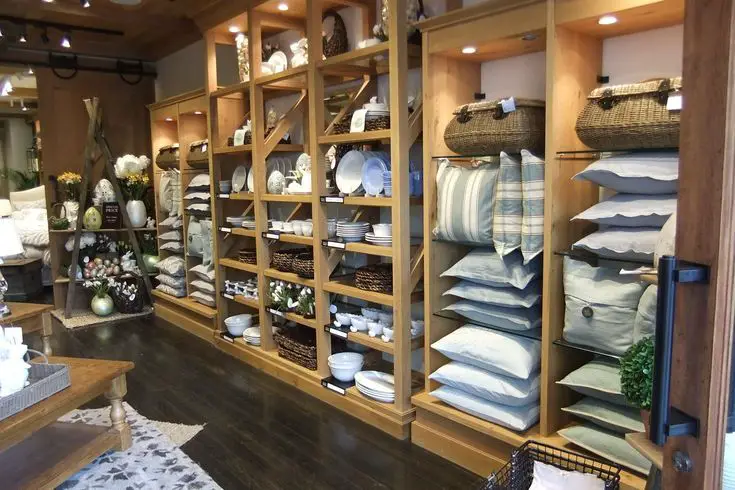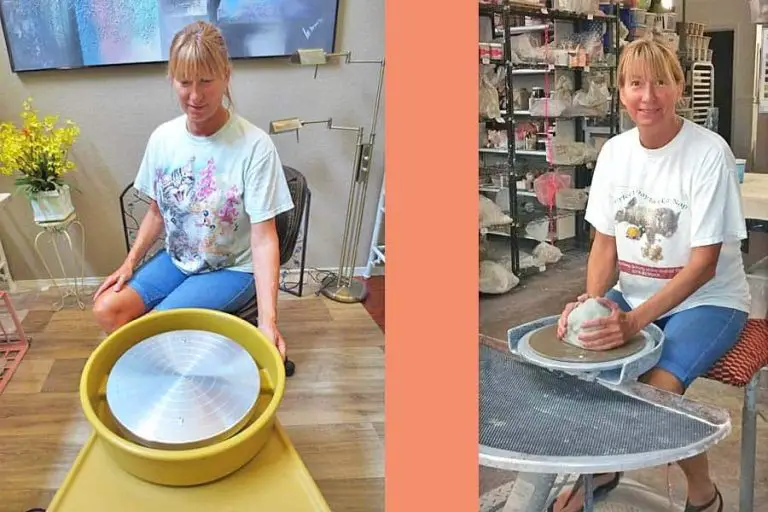What Company Is Pottery Barn Part Of?
Pottery Barn is a retail store specializing in home furnishings and decor. It was founded in 1949 in New York City by brothers Paul and Morris Secon as a store selling ceramic dishware and accessories. Over the years, Pottery Barn expanded its product selection to eventually include complete collections of furniture, bedding, bath items and other home goods. In 1986, the company was acquired by Williams-Sonoma Inc., a specialty retailer of high-end cooking equipment and furnishings. Under Williams-Sonoma, Pottery Barn experienced significant growth through catalog mail order and retail expansion. Today, Pottery Barn operates over 200 stores across the U.S. and Canada as part of the Williams-Sonoma portfolio of brands. It continues to be a leader in home decor and furnishings, combining quality products with accessible style.
Williams-Sonoma Inc.
Pottery Barn is owned by Williams-Sonoma Inc., a San Francisco-based multichannel specialty retailer and e-commerce company that sells home furnishings and other home-related merchandise. Williams-Sonoma Inc. was founded in 1956 by Charles E. Williams in Sonoma, California as a store selling European cookware imported to the United States. In 1978, Howard Lester acquired Williams-Sonoma and rapidly expanded the company into a conglomerate that now owns recognizable brands such as Pottery Barn, PBteen, Williams Sonoma Home, West Elm, and Mark and Graham. Williams-Sonoma Inc. acquired Pottery Barn in 1986 and made it into the “lifestyle brand” that it is known as today with casual furniture for every room of the home. As part of Williams-Sonoma Inc., Pottery Barn has access to the resources and scale of a major retailer while still maintaining its own unique brand identity.
Founding of Pottery Barn
Pottery Barn was founded in 1949 in San Francisco by Paul and Rhoda Secon. The original store was located on Pottery Barn Lane, giving the brand its name. At first, Pottery Barn focused on selling ceramics and home accessories. Paul had studied ceramics and worked as an apprentice to a potter, giving him the skills and inspiration to start the business. Pottery Barn quickly gained popularity among local designers and decorators who appreciated the high-quality and unique ceramics and home goods.

Acquisition by Williams-Sonoma
Pottery Barn was acquired by Williams-Sonoma, Inc. in 1986. Williams-Sonoma saw the potential to grow Pottery Barn further into the furnishings and home decor market. According to the Williams-Sonoma corporate timeline, “Williams-Sonoma, Inc. acquired the assets of Pottery Barn, a retailer selling casual home furnishings, and opened its first Pottery Barn Kids stores in 1999” (Williams-Sonoma, Inc. – Corporate Timeline). Under Williams-Sonoma’s leadership, Pottery Barn expanded its offerings to include furniture, lighting, rugs, and other home accessories. This acquisition allowed Pottery Barn to grow into the successful home furnishing brand it is today.
Growth Under Williams-Sonoma
After acquiring Pottery Barn in 1986, Williams-Sonoma focused on expanding the brand nationwide. According to the Williams-Sonoma corporate timeline, “As Pottery Barn started offering products for more rooms of the home, it became clear that we needed to address this very special market” (Williams-Sonoma). Under Williams-Sonoma’s ownership, Pottery Barn opened its first retail store in San Francisco in 1987. By 1995, Pottery Barn had expanded to over 40 stores across the United States.
To further growth, Williams-Sonoma launched the Pottery Barn catalog in 1987, allowing customers across America to shop the brand by mail order. The catalog “helped the company tremendously increase brand awareness and establish their signature style” (House Digest). The combination of retail stores and mail order catalogs propelled Pottery Barn’s rapid expansion throughout the late 1980s and 1990s.
Other Williams-Sonoma Brands
In addition to Pottery Barn, Williams-Sonoma Inc. owns and operates several other home goods brands. Some of the other major brands in its portfolio include:
- West Elm – A contemporary and mid-century modern furniture and home decor retailer founded in Brooklyn in 2002. Williams-Sonoma acquired West Elm in 2002. (Wikipedia)
- Williams Sonoma – The company’s flagship brand started by Chuck Williams in 1956 featuring high-end kitchenware and cooking essentials. (Williams-Sonoma, Inc.)
- Williams Sonoma Home – Launched in 2003, it offers luxury furniture and home decor. (Williams-Sonoma, Inc.)
- Pottery Barn Kids – Specializing in children’s furniture and decor, launched in 1999. (Wikipedia)
- PBteen – A brand targeting teenagers with trendy dorm and bedroom furniture, created in 2003. (Wikipedia)
- Rejuvenation – A lighting and house parts company acquired in 2011. (Wikipedia)
With its portfolio of brands, Williams-Sonoma Inc. is a leading specialty retailer of products for the home. Each brand targets a distinct segment of the home goods market.
Pottery Barn Today
Pottery Barn is one of the leading home furnishings retailers in the United States today. The company operates both physical retail stores as well as an ecommerce website at https://www.potterybarn.com/. As of 2022, there are over 195 Pottery Barn stores located across the US, Canada, Puerto Rico and Australia.
Pottery Barn offers a wide selection of furnishings and accessories for every room in the home. Some of their most popular categories include furniture such as sofas, beds, dressers, dining tables, office furniture and outdoor furniture. They also offer a variety of home decor products like rugs, pillows, curtains, wall art and mirrors. Lighting, tabletop items, bedding and bath products round out their extensive assortment.
While Pottery Barn is best known for their timeless, classic aesthetic, they have expanded their styles in recent years to include more contemporary and transitional looks. They also partner with influencers, celebrities and designers on limited edition collections. Everything is high quality and made to last for years to come. Shoppers can outfit an entire home with Pottery Barn’s signature cohesive style.
Leadership
Pottery Barn is led by a team of experienced retail executives who have worked to grow the brand under Williams-Sonoma. Some key leaders include:
Laura Alber, the CEO of Williams-Sonoma, Inc. oversees Pottery Barn as part of the company’s portfolio of brands. Alber has served as CEO since 2010 and has overseen major growth and expansion.
Marta Benson serves as the President of Pottery Barn Brands, overseeing Pottery Barn, Pottery Barn Kids, and Pottery Barn Teen. Benson has previously held executive roles at other major retailers including Gap, Inc.
Allison Mast serves as the Vice President of Merchandising of Pottery Barn. Mast has been with the brand since 2019 and leads merchandise planning and product development.
The leadership team has decades of combined retail experience and has positioned Pottery Barn for continued growth under the Williams-Sonoma, Inc. umbrella.
Sources:
https://www.linkedin.com/posts/vickimcwilliams_our-limitless-pottery-barn-leadership-team-activity-6580504784711806976-WoIb
https://www.comparably.com/companies/pottery-barn/leadership
Financial Performance
Pottery Barn has been driving substantial revenue growth for parent company Williams-Sonoma in recent years. In fiscal year 2022, Pottery Barn’s net revenue reached $3.556 billion, up 14.9% from $3.121 billion in fiscal 2021 (Source 1). This made Pottery Barn the leading brand within Williams-Sonoma’s portfolio of retail brands. According to eCommerceDB, the total online revenue from potterybarn.com in 2022 was $2.258 billion, demonstrating the importance of ecommerce to the brand’s success (Source 2).
In the fourth quarter of fiscal 2022 specifically, Pottery Barn’s net revenue grew to $967 million, a 5.8% increase compared to $921 million in the same quarter the previous year (Source 3). The brand’s consistent revenue growth in recent years has been a major factor driving Williams-Sonoma’s overall financial performance and position as a leading home furnishings retailer.
The Future
Pottery Barn continues to have an optimistic outlook for the future. The brand plans to expand its presence globally, especially in markets like China and India where the middle class is growing. Pottery Barn also aims to enhance its digital and e-commerce capabilities to align with shifting consumer preferences for online shopping.
Some new initiatives in the works include a greater focus on sustainable and eco-friendly products, designing furniture and home goods tailored specifically for small spaces, and developing more technology-integrated products like the Pottery Barn Smart Home line. The company hopes that by branching out into new product categories, it can attract first-time home buyers and younger demographics looking to furnish their first homes.
Overall, Pottery Barn remains well-positioned for growth by leveraging the strength of the Williams-Sonoma brand portfolio while also adapting its offerings to appeal to changing consumer tastes and shopping habits. Its investments in global expansion, e-commerce, and new product development are expected to drive continued success over the next decade and beyond.




